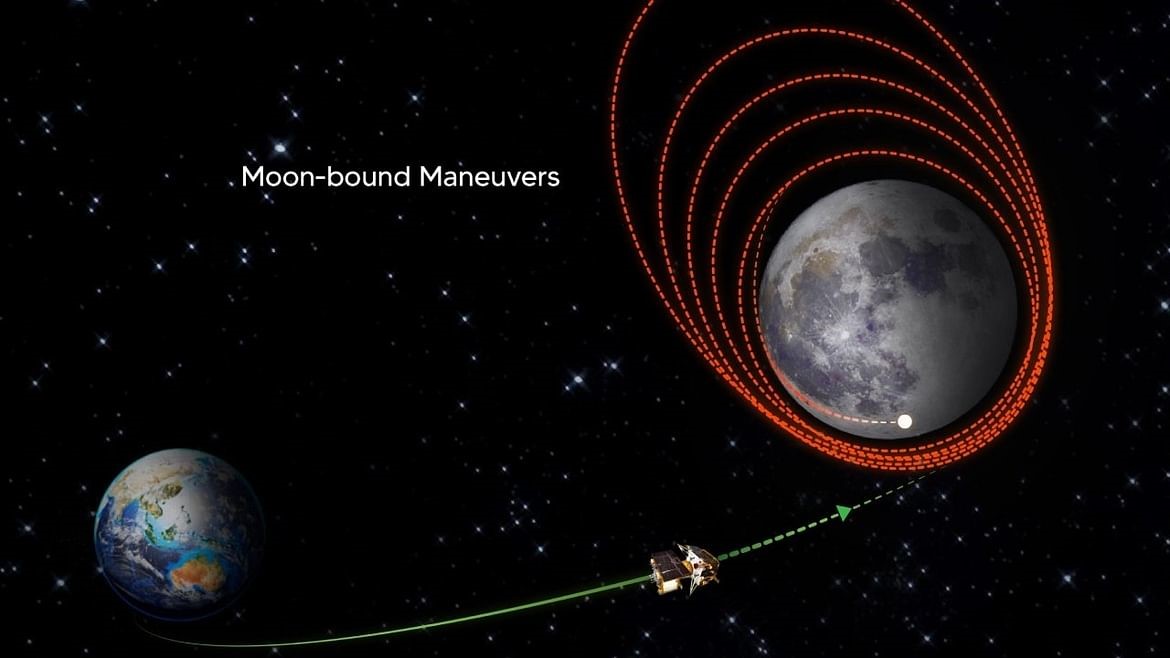India’s third lunar charge Chandrayaan- 3 successfully enteredd the route of the moon on Saturday after covering for over 300,000 km in three weeks in deep room following a precise course strictly rehearsed by the Indian Space Research Organisation.
Over the coming 18 days, the haste of the inquiry will be downgraded sluggishly while bringing around it down to a lesser route of around 100 km ahead trying the important- anticipated soft wharf near the lunar South Pole at 5.47 pm on August 23.
In an update, ISRO spoke the Rs 600 crore spacecraft enteredd lunar route on Saturday pm by retro- burning at the Perilune for 1,835 seconds starting at7.12 pm. “The manoeuvre redounded in an route of 164 km x 18074 kms intended, ” the ISRO spoke, adding that this is the third time in race that the room division has successfully fitted its spacecraft into the lunar route, piecemeal from serving consequently formerly into the Martian route.
The former two occasions were during Chandrayaan I and Chandrayaan- II. “MOX, ISTRAC, this is Chandrayaan- 3. I’m feeling lunar graveness,” it spoke in a communication posted on the gregarious media platform X formerly known as Twitter. “Chandrayaan- 3 has been successfully fitted into lunar route. A retro- burning at the periling was commanded from the Mission Operations Complex, ISTRAC,” it appended.
After some manoeuvres, the propulsion module will disassociate from the commonwealth while in route. Following that, a series of daedal retardation manoeuvres will be executed to grease a soft wharf in the South Polar Region of the moon on August 23, the ISRO appended.
The room division spoke all the systems of Chandrayaan- 3 were healthy and the coming lunar bound route manoeuvre was listed for Sunday night. “The health of the spacecraft is being continuously covered from the MOX at ISRO Telemetry, Tracking and Command Network (ISTRAC) in Bengaluru, ” the division spoke.
After the commonwealth carrying the drifter gets separated from Chandrayaan- 3, the remaining portion of the room inquiry will encircle the satellite raying data from a special cargo, which will hold the key to identify Earth- suchlike exo- globes in future. Named fashion or Spectro- polarimetry of Habitable Planet Earth, the cargo will gawk at the planet to detect out the tell- tale gesticulations of how the atmosphere of the Earth looks from room. “The hand can be exercised to detect analogous planet- suchlike exo- globes,” astrophysicist Somak Raychaudhury, Vice Chancellor of Ashoka University told DH.
Aimed by scientists at the Space Application Centre, Ahmedabad and UR Rao Satellite Centre, the cargo will prop in unborn findings of lower globes and have scientists to probe into the variety of exo- globes that would qualify for the presence of life.
While further than 7,000 exo- globes are known at the moment, there are numerous budgeted room operations to probe for further similar globes with a seat on the inhabitable bone. The ISRO also plans for one similar charge in collaboration with the UK. The spectrograph data and high- conclusion images from fashion will support next- generation exo- earth operations understand the atmosphere of similar globes and detect out if there are autographs of inhabitable globes, ” spoke Raychaudhury.
The cargo is a portion of the propulsion module that will remain in route after the separation of the commonwealth. The ISRO had in the once 22 days carried out five route raising man oeuvres before slingshot the spacecraft into the Trans lunar route on August 1.



